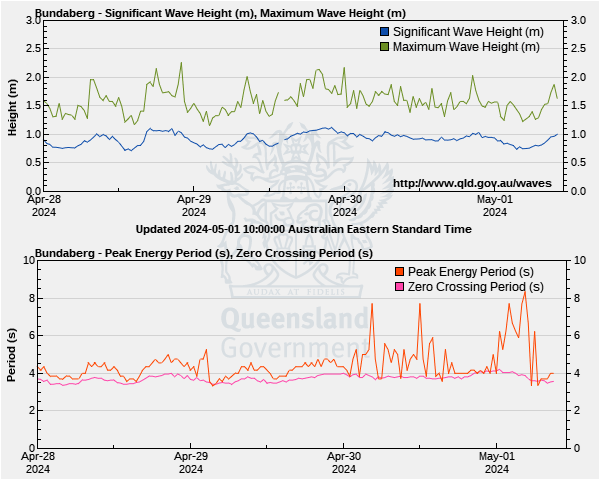Current Queensland Wave Conditions
These images represent the current wave height and wave period up to two hours ago. The data is measured by wave rider buoys operated by the Queensland Department of Science, Information Technology and Innovation
Gold Coast
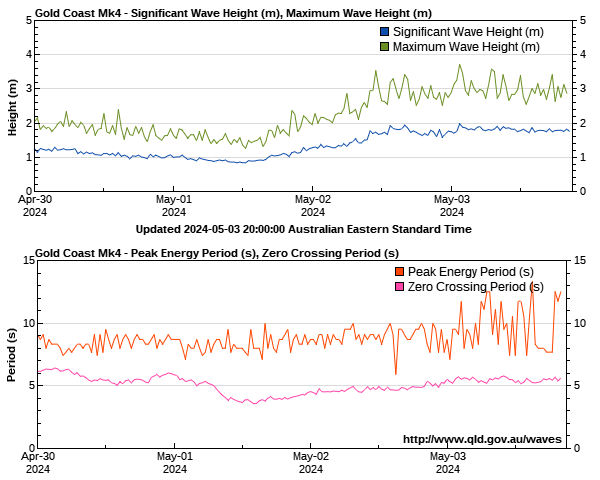
Gold Coast, Bilinga

Gold Coast, Palm Beach
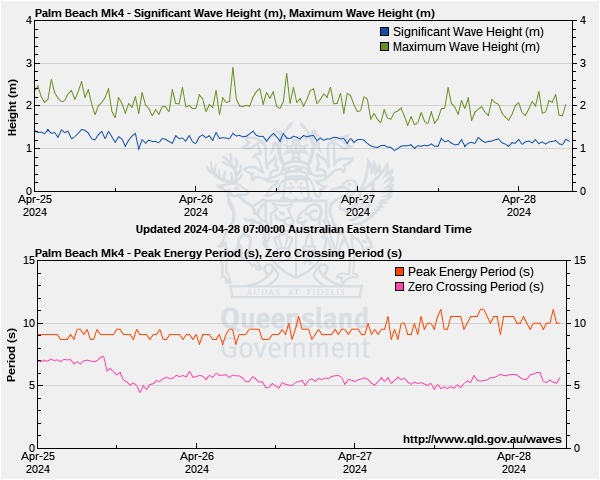
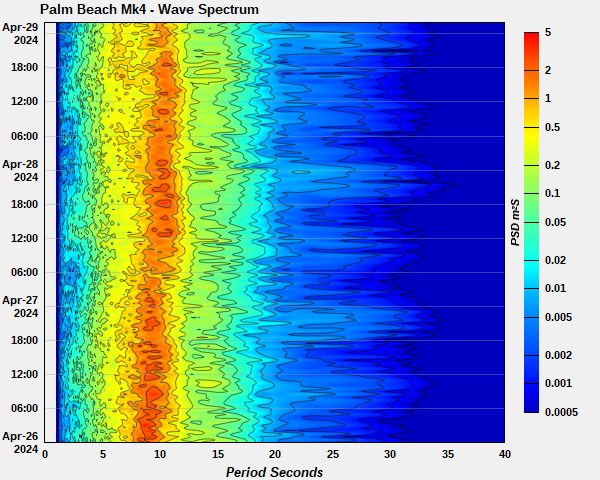
East of North Stradbroke Island


Water current speed and direction off North Stradbroke Island.
North Moreton Bay
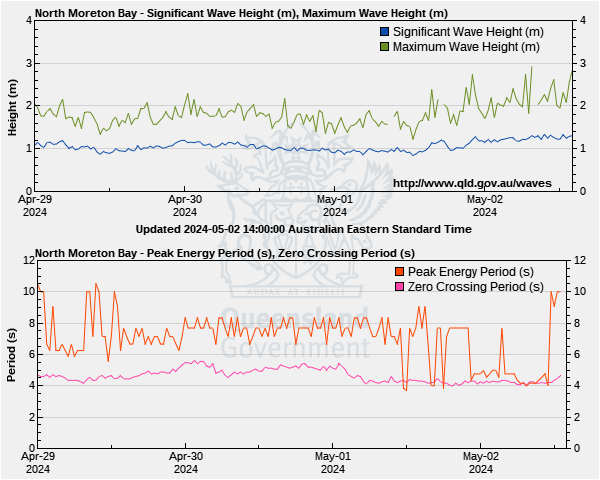
Mooloolaba
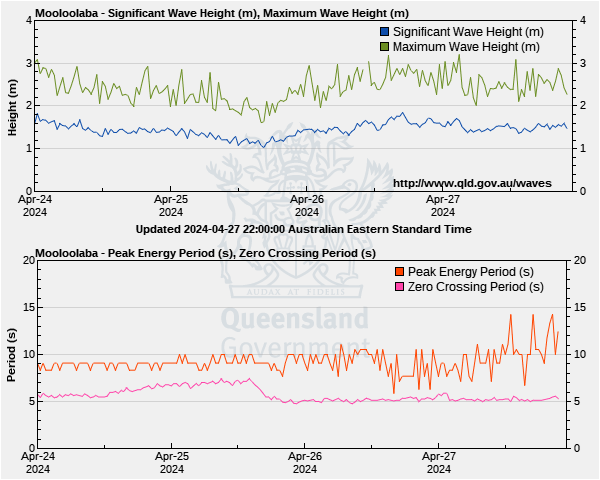
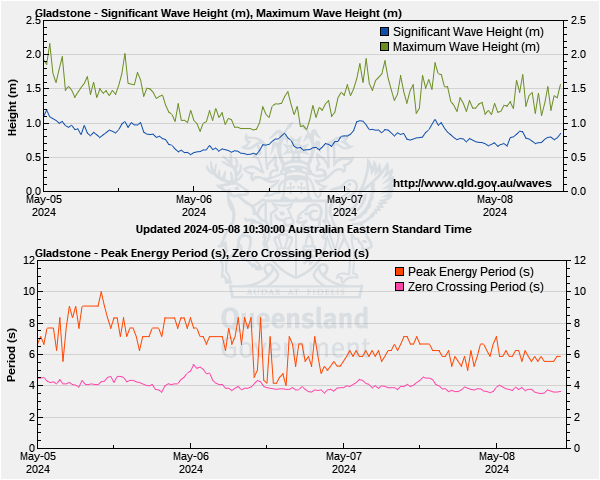
Emu Park, North of Curtis Island

Hay Point
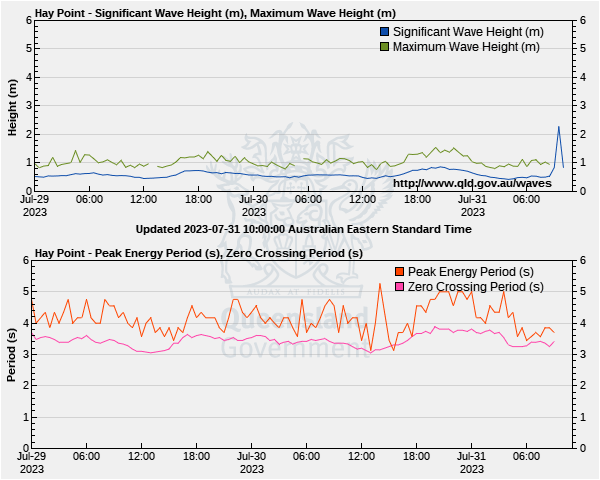
Mackay
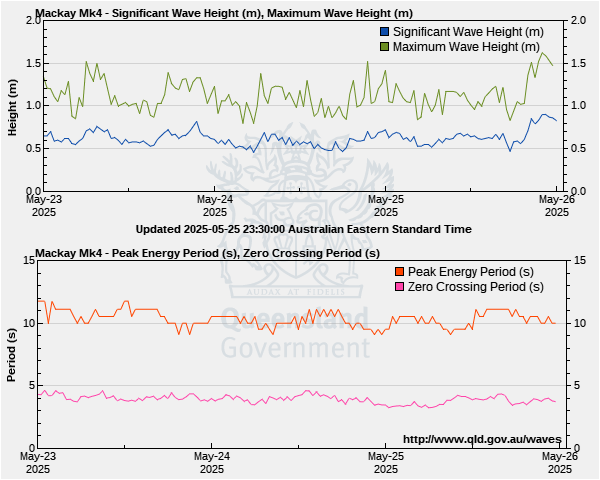
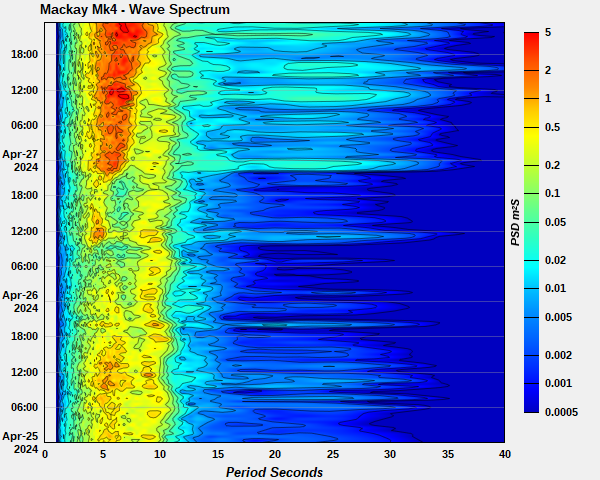
Water current speed and direction off Mackay.
Abbot Point
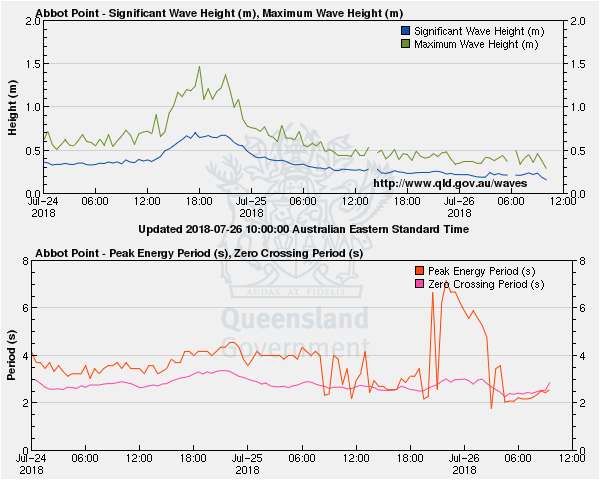
Townsville


Cairns
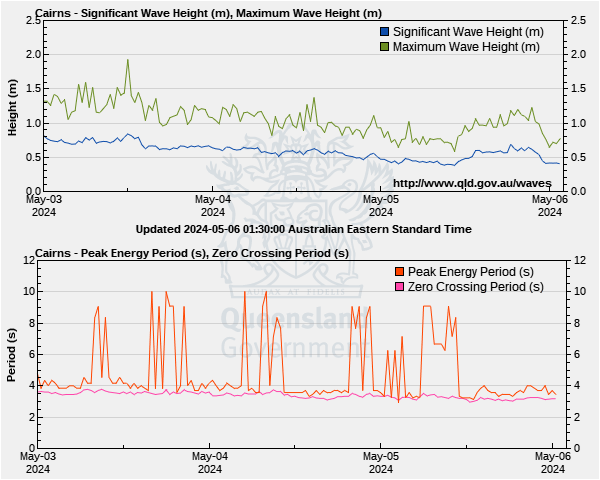
Weipa
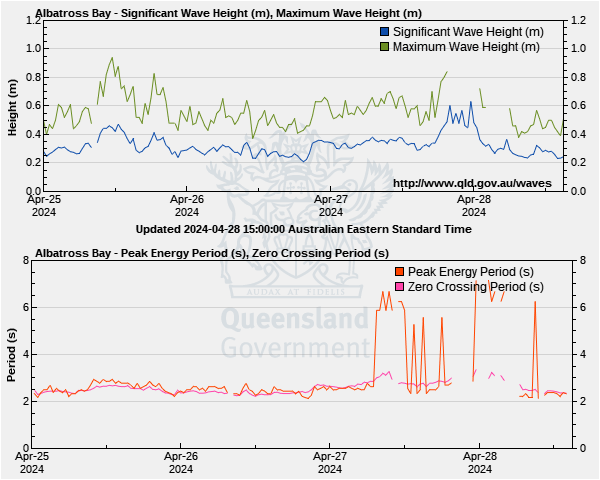
Resources:
www.qld.gov.au/waves Creative Commons Attribution 3.0 Australia (CC BY) licence

 Marine Science Australia
Marine Science Australia


